Often on Instagram, I’ll receive a DM asking me, “What is a CSA?” or “How does Community Supported Agriculture work anyway?”
Back in 2021, I wrote a post on the 3 lessons learned after one year of CSA membership. Many of those lessons still ring true today. We joined the Sage Mountain Farm CSA in April 2020 and have loved everything about it. April 2024 will mark 4 years as CSA members with this farm. It’s been, by far, the best decision we’ve made in supporting our local food system while enjoying seasonal produce at its best.
It’s also worth noting that this blog began, in large part, from my desire to share recipes and meal inspiration using all the produce we were getting in each CSA delivery. Cooking with the seasons has absolutely become a delicious way to support our local farmers and food systems. In this post, I’ll offer context defining Community Supported Agriculture (CSA), the benefits of joining one, and some of my favorite recipes inspired by all the local fare we’ve received over the years.
What is Community Supported Agriculture?
Community Shared Agriculture, or CSA, is a farming model. In this model, a farmer or network of farmers grow a variety of crops to sell. Traditionally, the consumer will buy a share of the farmer’s harvest up front. In return, the consumer will receive a regular box of fresh fruits and vegetables. To ensure a level of predictability, the farmer will create a membership for the CSA. For example: in our CSA, we are billed for four (4) box deliveries totaling $160. For that price of $160, we will receive 4 boxes of fresh produce. This is usually scheduled as a weekly delivery.
The CSA model is built on increasing fairness and transparency for both the farmer and the consumer. The consumer purchases the “farm shares” in advance. This helps supply the farm with a level of financial security for the growing season. In return, the farmer provides the consumer with the harvested produce. It’s a beautiful reciprocal cycle of consumer supporting farmer and farmer providing food directly to consumer.
Sage Mountain Farm also offers a meat CSA whereby this same model applies. The farm offers a number of meat shares in a six or twelve month cycle. This is based on the number of animals they are raising. Members pay in advance and, in return, will receive a predetermined amount of ground meat, steaks, and more. This helps to keep costs in mind for the farm to support humanely and sustainably raising animals for meat.
Community Supported Agriculture is vitally important to our local food system. The quality of our food, the livelihood of the farmers that grow it, and the sustainability of our food systems depend on it.
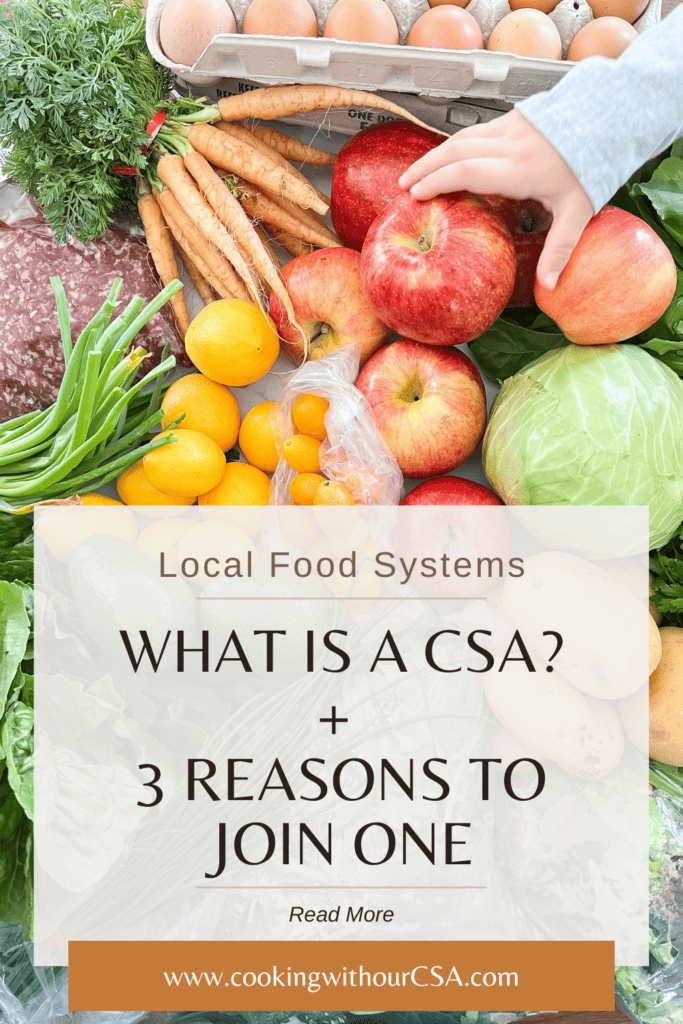
What are the Benefits to Joining a CSA?
There are a number of benefits to joining a CSA and I’ll speak to them in the following categories: consumer benefits, community benefits, and environmental benefits.
Consumer Benefits of CSA
As a consumer, I’ve seen and experienced three key benefits to joining a CSA:
- Peak Freshness: First and foremost, CSA members (consumers) enjoy high-quality and incredible fresh produce. Produce is usually harvesting during the week of delivery, usually just days before. This means we’re receiving the freshest fruits and veggies possible.
- Directly Supporting Local: There is a gratifying feeling knowing we’re supporting our local farmers and farms. I’ve so enjoyed building the relationship with Phil and the Sage Mountain Farm team over the years. I’ll learn about new crops Phil is growing, get ideas for how to prepare ingredients that are new to me, and most important: I know how the food my family and I consume is grown.
- Economically Efficient Meal Planning: Third, our CSA membership has been an incredibly economical and efficient way to shop and plan for meals. Approximately 90% of the produce we use in a given week for our family meals comes directly from the weekly CSA box. That’s a lot! And at $40 a box, that’s an incredibly budget friendly way to feed our family good quality produce.
Community Benefits of CSA
Just like for the consumer, there are three key benefits to the community through CSA:
- Supporting Small Farms: For nearly 75 years, the United States has grown its large-scale industrialized farming system in near Goliath like fashion. With aims for efficiency, enhanced food safety, and greater profit margins, these large-scale farms have squeezed out small family farms in the process. Smaller farms simply cannot compete with the level of productivity and low market prices industrialized farms offer. However, this does not mean small farms cannot exist. In fact, small farms are needed now more than ever. Our ability to “vote with our dollars” by supporting small farms that offer a CSA subscription is one way we combat a system that does little to support and encourage smaller family farms from cultivating successful businesses and grow the foods that feed our communities.
- Local Business Support: Depending on where your CSA pickup is located, there is opportunity to support the local businesses in the area. For us, it can mean supplementing produce with additional items from other local farm vendors. It can also mean supporting the local restaurants and grocery stores that carry produce from the small farms that grow it too.
- Cultivating a Robust Local Food System: Per the National Agricultural Law Center, a Local Food System is defined as “food that travels the entire supply chain in the same locality.” This includes “from production to consumption.” This can vary based on geography though research has already revealed where inequities lie for communities experiencing food insecurity. By directly supporting the local farms and farmers we are helping to cultivate a more locally based food system from which our food is grown and shared with all those in the localized community. This increases greater food equity and can also aid in the reduction of food deserts.
Environmental Benefits of CSA
Finally, Community Supported Agriculture offers a number of environmental benefits such as:
- Reduction of Carbon Footprint: One key environmental benefit of CSAs is the massive reduction in producing and emitting greenhouse gases. There is no need for lon-haul trucking or additional refrigeration to keep food cool traveling long distances. There is also no need for additional packaging. In a CSA model, produce is packaged in a recyclable cardboard box. This box is returned back to the farmer to reuse for the next week’s delivery. This reduction in fuel, distance, and materials to producing and transporting food means a cost savings to both farmer and consumer.
- Regenerative Farming Practices Help Replenish Land: Local, small farms and farmers are heavily invested in the long-term ecological health of the land. Therefore, they tend to employ a number of biodynamic and organic farming techniques. Sustainable agricultural farming practices are often at the center of their business. This can include anything from cultivating healthy soil, preventing erosion, managing water resources and limiting the use of antibiotics, pesticides, and herbicides. Despite the outsized control large-scale farming operations have on our food system, alternatives like small farm CSAs offer a better alternative to the monocropping practices that deplete soil quality from industrial farms. CSA subscriptions are one prime example of how we can collectively address the pressing issues surrounding a changing climate.
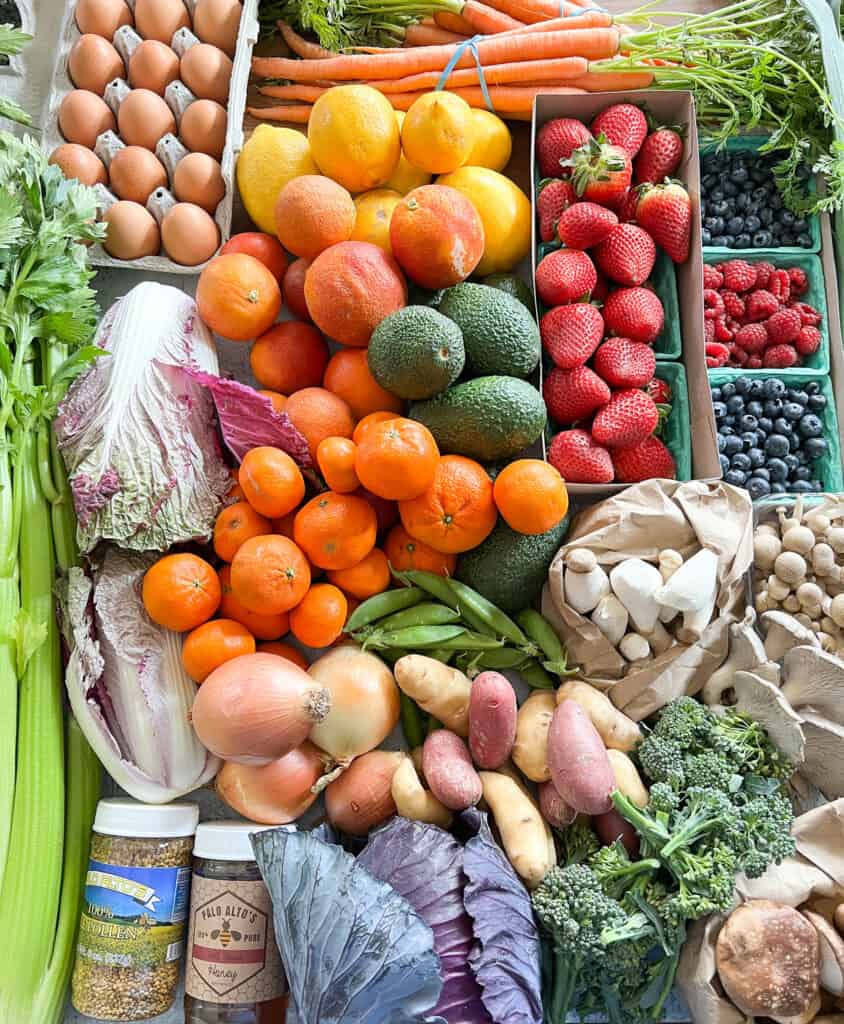
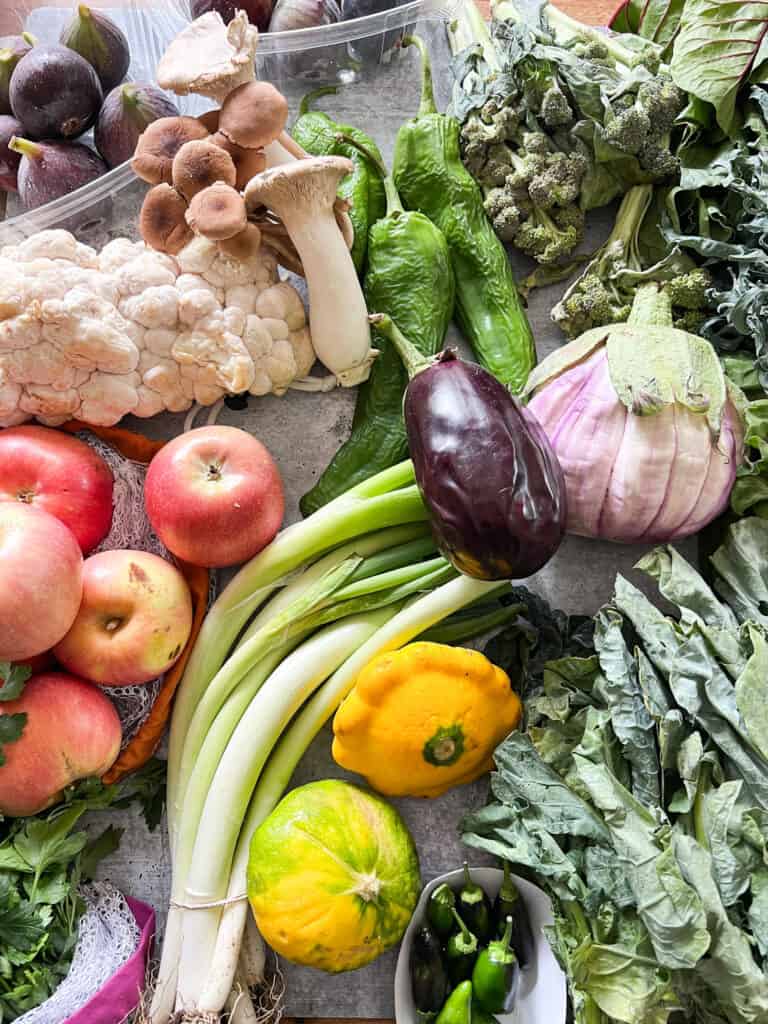
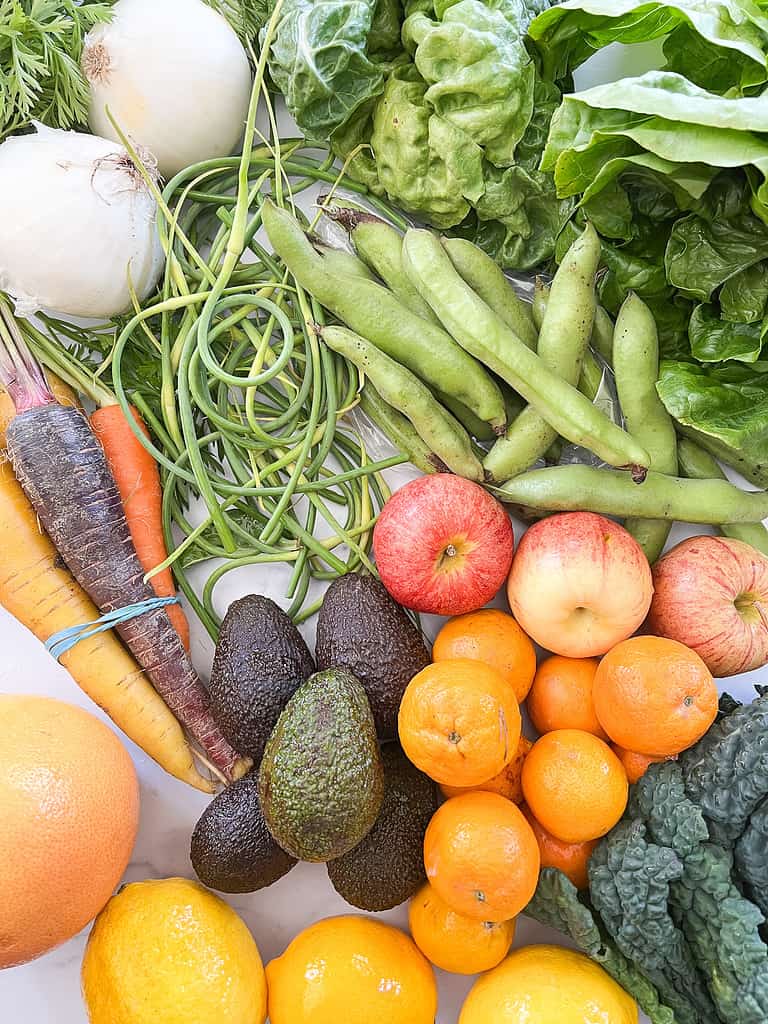

Why Join a CSA? Three Reasons to Consider
The reasons I outlined in my original post in 2021 still hold true today. When thinking about the reasons to consider joining a CSA, here are my big 3:
- Fewer Trips to the Store: We have a weekly location where we pick up our box. This also happens to be located at our weekly Farmer’s market. With the bulk of the produce we use contained in that box it reduces the number of trips I need to make to the grocery store. I like to take a peek into the box to see what ingredients we have. Then I can stop at the local grocery store to finishing the week’s grocery haul.
- Bulk of Produce is Secured for the Week’s Meals: It’s so awesome knowing we have the bulk of our fruits and vegetables to feed a family of four for the week. If there are items that we didn’t get, I’ll add it to the grocery list to pick up on the way home. The produce in our CSA also stays fresher for longer. There are items I’ll have that may last a good two weeks or more (hello, winter squash).
- Price Point and Ease of Scheduling Holds: Our CSA membership costs $160 for 4 CSA box deliveries. That translates to nearly $40 per box. Some boxes can last us up to 2 weeks (if I really stretch it); others last just the week. Nevertheless, I love knowing that if I haven’t used up all the produce in our box, I can pause delivery for a week so I can make sure I use it all before getting the next box.


Meal Inspiration with a CSA Box
One of the biggest drawbacks to CSA membership that many readers and fellow CSA members have shared with me comes down to knowing what to make with all the ingredients we get in a given delivery. This is an entirely normal feeling to have!
This was a key learning for me when joining our CSA. Cooking with the seasons is truly a learned practice. It also is what led me to write the weekly newsletter, Dinner Plans. Check out my Meal Plans page here for all the archived Dinner Plan menus. These menus highlight how we use the produce we receive in each weekly box. I also include links to recipes that I’ve made or enjoyed using that fresh produce.
Below is a sampling of my favorite recipes that celebrate the seasonal produce in each CSA box:
- Autumn: Maple Roast Harissa Carrot Soup with Crispy Mushrooms
- Winter: Spaghetti Squash & Red Potato Latkes
- Spring: Blood Orange and Currant Scones
- Summer: Heirloom Tomato Sauce & Shishito Rellenos
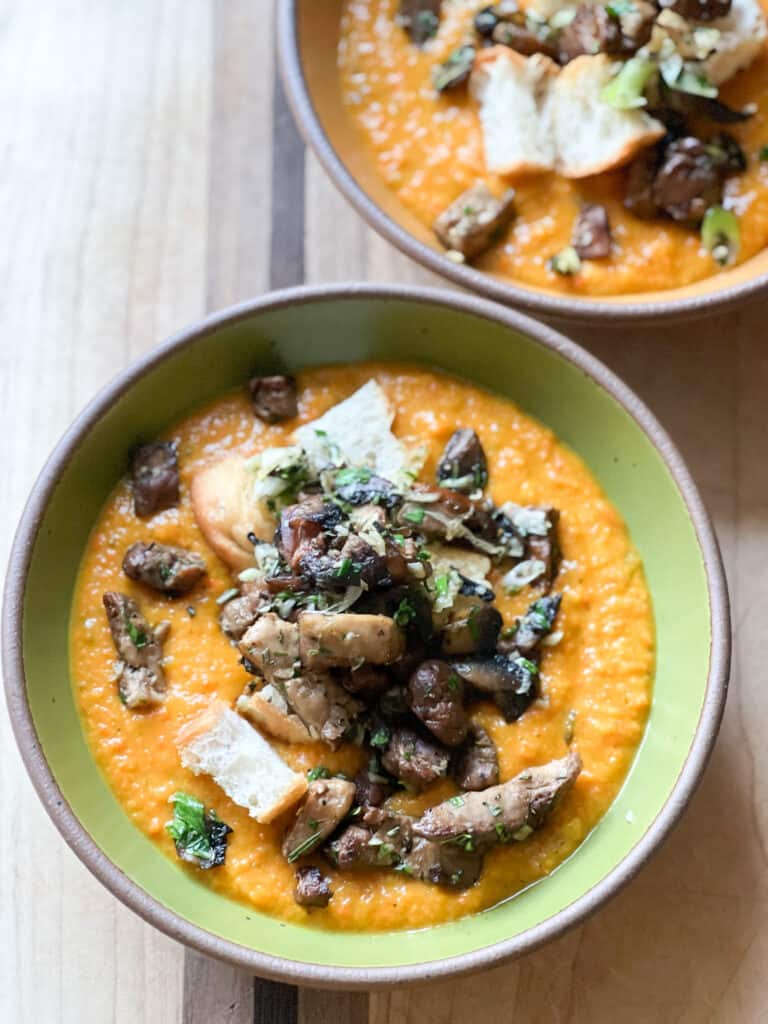
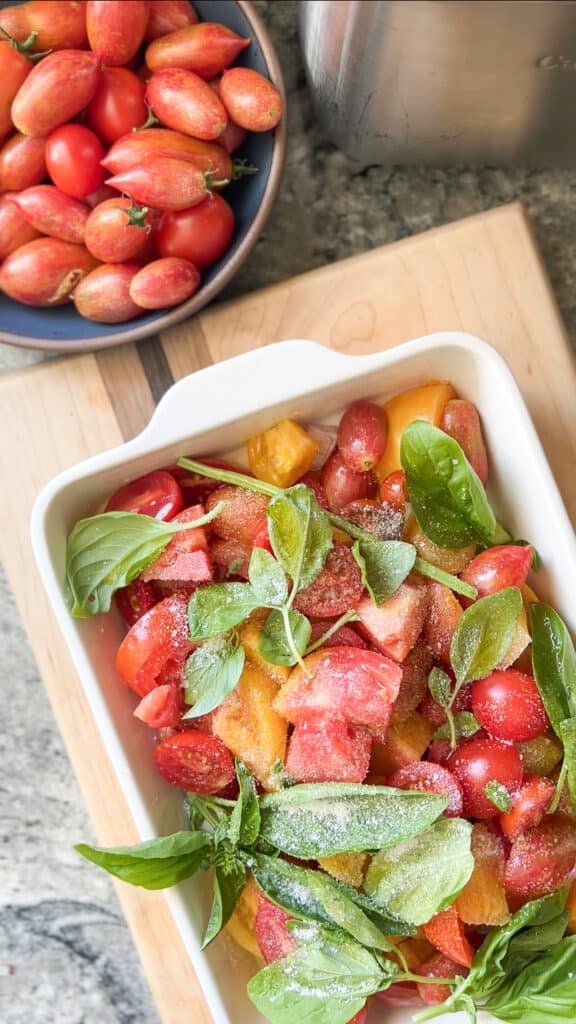
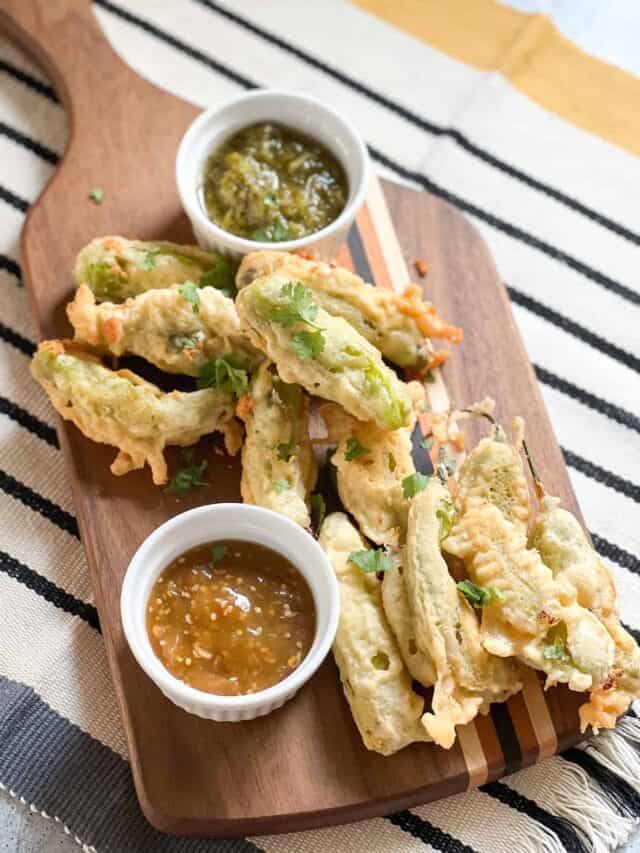
More Seasonal Cooking Inspiration and Ideas
Subscribing to a CSA has been one of my go-to practices when it comes to seasonal cooking. Cooking delicious food with our CSA definitely gets us out of a dinner rut and reduce food waste. I share plenty more tips, meal ideas, and recipes in my weekly newsletter: Dinner Plans. Subscribe to my weekly newsletter to be in the know when they’re live. 😉
Happy to answer your questions about community supported agriculture in the comments below. In the meantime, cheers to the next nourishing meal. 🧡
